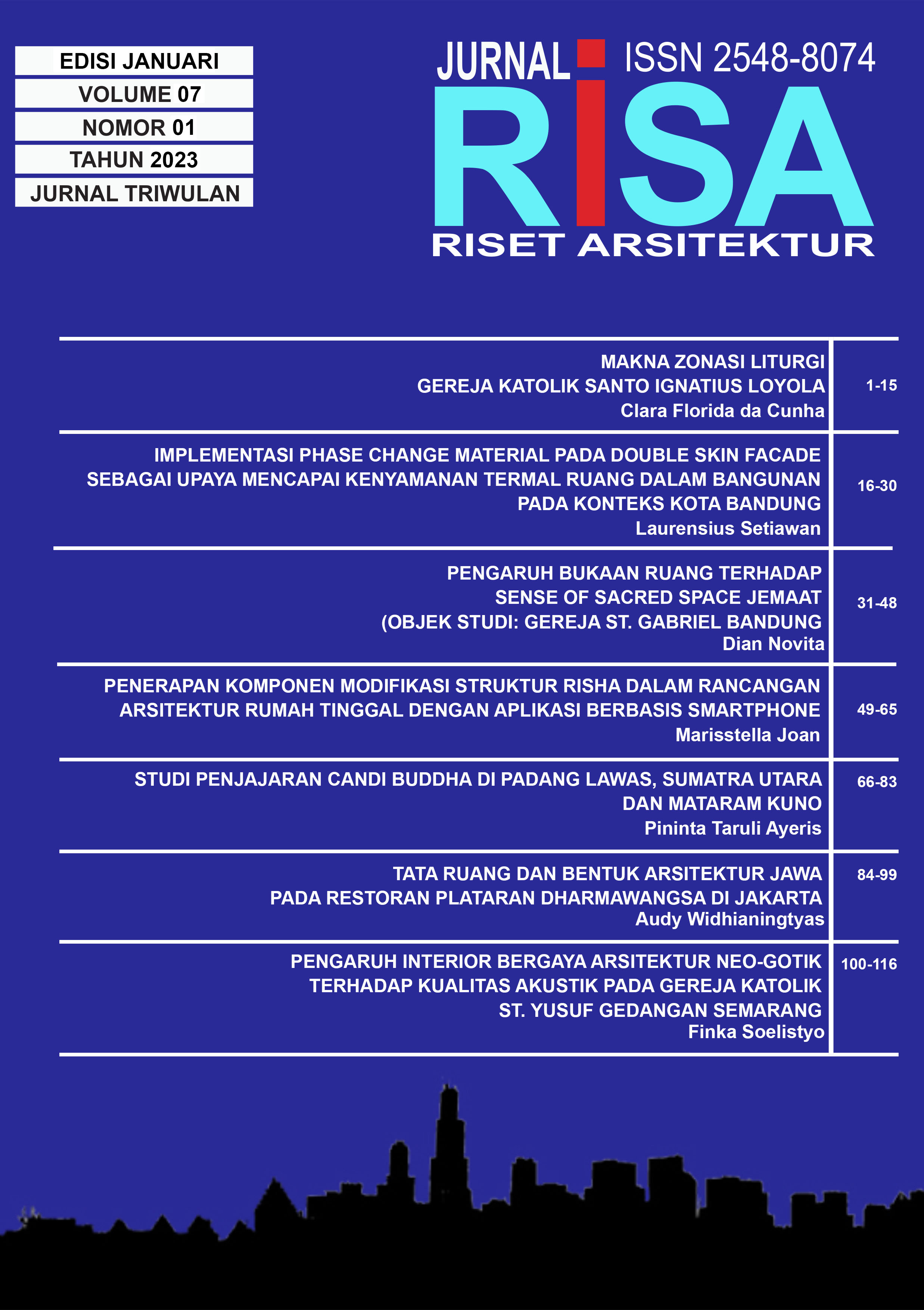THE IMPACT OF NEO-GOTHIC INTERIOR STYLE TOWARDS THE ACOUSTIC QUALITY AT ST. JOSEPH’S CATHOLIC CHURCH GEDANGAN SEMARANG
DOI:
https://doi.org/10.26593/risa.v7i01.6370.100-116Abstract
Abstract - The church as a place of worship is required to have an ideal acoustic quality, without forgetting other aspects. St. Joseph’s Church Semarang is one of the historic buildings in Semarang with a Neo-Gothic architectural style, with a little Gothic influence. In the Neo-Gothic era, the design of a church was more emphasized on the liturgical aspect so that the proportions of the space tended to be gigantic. Another feature of Neo-Gothic architecture is the presence of large columns in the interior, an elongated floor plan, and the use of materials such as stained glass, solid wood, and marble floors. These features of Neo-Gothic churches can potentially affect acoustical qualities such as sound distribution, speech definition, reverberation time, and acoustic defects.
In this study, observations will be made on the effect of Neo-Gothic architectural style interiors on acoustical quality using post-occupancy evaluation methods with quantitative and qualitative approaches. This study discusses the theory of Neo-Gothic architecture and the theory of the ideal acoustical quality of the church, then compares the theory with the results of tests and observations in the field, calculations, and simulations using software. This is done to find out how the acoustical quality of the church with the parameters of sound distribution, speech definition, and reverberation time using direct sound sources or loudspeakers. It also discusses the placement of loudspeakers. Qualitative data in the form of people's perceptions of voice articulation and voice intelligence are also used to support the results of calculations and testing.
The results showed that the Neo-Gothic interior style of St. Joseph’s Church Semarang has an influence on the acoustical quality of the worship space in terms of several parameters of the acoustical quality of the church. The plan of the church is rectangular, causing the distribution of sound to be uneven in the seating area of the people at the back. The existence of large columns in the interior of the worship room causes acoustical defects in the form of acoustical shadows. The volume of space that is too large due to the high ceiling and the shape of the ceiling that follows the rib vault structure system causes the reverberation time to be high or not ideal. In addition, the reflection on the ceiling also causes acoustical defects in the form of long delayed reflection, which reduces speech definition. The interior material which is entirely reflective material also contributes to the high value of the reverberation time which also has an impact on the low level of speech intelligibility, caused by the lack of diffusion. Placement of the existing loudspeaker in the worship room of St. Joseph’s Church Semarang is proven to be effective in helping to improve voice distribution, speech intelligibility, and reduce acoustical defects in the form of sound shadows, but it is less effective on speech intelligibility and affects long delayed reflection.
Keywords: Worship Space, Neo-Gothic Architecture, Acoustic Quality, St. Joseph’s Catholic Church Gedangan Semarang
Additional Files
Published
Issue
Section
License
Copyright (c) 2023 Finka Soelistyo

This work is licensed under a Creative Commons Attribution-NonCommercial-ShareAlike 4.0 International License.












